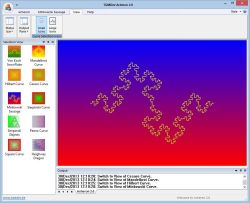The Hilbert Curve, named from the german mathematician Hilbert, is a well known fractal curve.
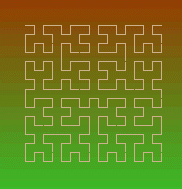
Construction Back to Top
The first iterations give the following pictures:

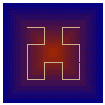
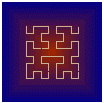
Properties Back to Top
- Fractal Dimension
- Self-Similarity
The fractal dimension is computed using the Hausdorff-Besicovitch equation:
D = log (N) / log ( r)
Replacing r by two ( as the square side is divided by two on each iteration) and N by four ( as the drawing process yields four self-similar objects) in the Hausdorff-Besicovitch equation gives:
D = log(4) / log(2) = 2
Looking at two successive iterations of the drawing process provides graphical evidence that this property is also shared by this curve.
All Variations described are available using Acheron 2.0
- Iteration Level
- Similarity Ratio
Eight recursion levels are available. Above this level of iteration, the drawing area is covered more and more completely by the curve.
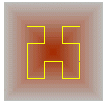
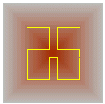
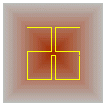
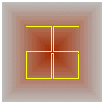
 Born: 23 Jan 1862 in Konigsberg, Prussia (now Kaliningrad, Russia)
Born: 23 Jan 1862 in Konigsberg, Prussia (now Kaliningrad, Russia)Died: 14 Feb 1943 in Gottingen, Germany
David Hilbert entered the University of Konigsberg where he went on to study under Lindemann for his doctorate which he received in 1885.
Hilbert was a member of staff at Konigsberg from 1886 to 1895. In 1895,
Hilbert was appointed to the chair of mathematics at the University of
Gottingen, where he continued to teach for the rest of his career.
Hilbert's first work was on invariant theory. In 1893 while still at
Konigsberg Hilbert began a work on algebraic number theory.
A systematic study of the axioms of Euclidean geometry led Hilbert to
propose 21 such axioms and he analysed their significance.
Hilbert contributed to the development of mathematical physics by his important memoirs on kinetic gas theory and the theory of radiations and to many branches of mathematics, including invariants, algebraic number fields, functional analysis, integral equations, mathematical physics, and the calculus of variations. Hilbert's famous 23 problems challenged (and still today challenge) mathematicians to solve fundamental questions.
Hilbert received many honours. In 1905 the Hungarian Academy of Sciences gave a special citation for Hilbert. In 1930 Hilbert retired and the city of Konigsberg made him an honorary citizen of the city. He gave an address which ended with six famous words showing his enthusiasm for mathematics and his life devoted to solving mathematical problems:-
Wir mossen wissen, wir werden wissen - We must know, we shall know.
Biography From School of Mathematics and Statistics - University of StAndrews, Scotland
